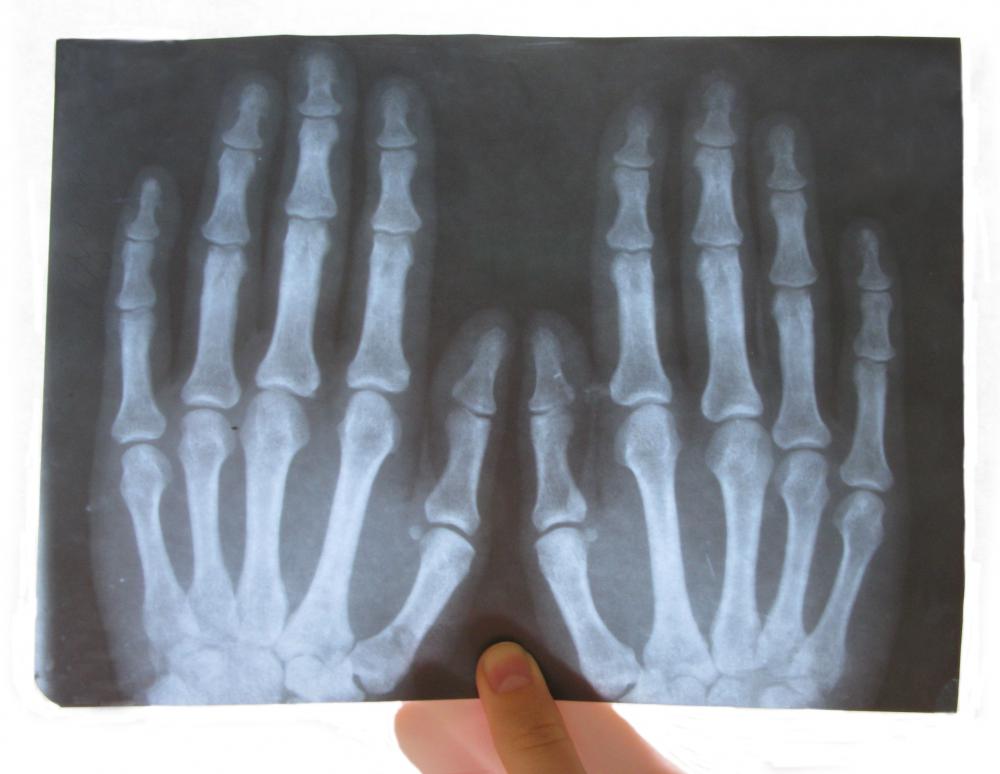At TheHealthBoard, we're committed to delivering accurate, trustworthy information. Our expert-authored content is rigorously fact-checked and sourced from credible authorities. Discover how we uphold the highest standards in providing you with reliable knowledge.
What Is an Extensor Expansion?
The human hand is comprised of the wrist, palm, four fingers, and an opposable thumb. Each part of the hand is connected to the others by a complex network of twenty-seven different bones connected by a series of muscles, tendons and ligaments. The extensor expansion, also referred to as the "dorsal hood," is the band of tendons that makes up the back of the hand.
Tendons are small rope-like bands of specialized tissue that attach a muscle to a bone, much like the cord of an electrical appliance hooks into an outlet. When the muscle is “turned on” or contracted, the tendons allow for the bones to move. In the extensor expansion, however, instead of the tendons being rounded, they are flat, giving the backs of the hands a uniformed, almost smooth appearance. This squashed sheet-like tendon is known as the "aponeurosis."

The muscles of the hand are divided into two groups, the intrinsic and extrinsic muscle groups, depending on their placement, attachment site and movement. The muscles of the thumb located in the thenar eminence, the cushioned area directly below the thumb, and the muscles of the little finger situated in the hypothenar eminence, or the padded area underneath the last finger, are considered intrinsic muscles. These two sets of muscles start between the metacarpal bones, or the bones of the fingers, and a collection of muscles known as the lumbricals that allow the hand to flex or curl into a fist. From here, the intrinsic muscles then attach to the extensor expansion.

Within the hand, the extensor expansion splits into three separate strips. The lateral band stretches from the proximal phalanges, or fingers, in the midsection of the hand down to the ends of the fingers whereas the singular medial section runs from the top to the bottom of the middle finger. The third strip, called the retinacular ligament, tracks parallel along the middle finger and runs to the anterior or palmar side of the fingers connecting the fibrous encasement of this tendon to the extensor expansion.
As with any other muscle or tendon in the body, the extensor expansion can be damaged due to injury and certain medical conditions that cause inflammation, or pain and swelling of the area. Arthritis of the hands, for example, that causes an abnormal joint structure, can cause these tendons to become irritated or pushed out of their normal position. In turn, this may cause tenderness or pain in the hand and trigger problems with hand movement.
AS FEATURED ON:
AS FEATURED ON:












Discuss this Article
Post your comments